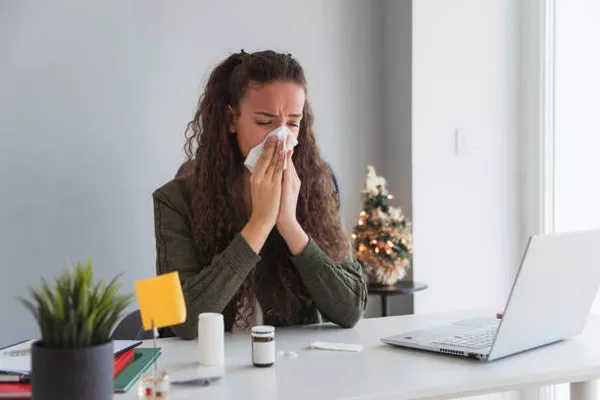In recent years, as wine consumption has soared worldwide, so too has the awareness of allergic reactions associated with its consumption. While allergic reactions to wine can stem from various sources, one lesser-known culprit is wine yeast allergy. In this comprehensive guide, we delve into the intricate world of wine yeast allergy, exploring its causes, symptoms, and management strategies.
Wine Yeast Allergy
Wine yeast allergy, also known as yeast hypersensitivity, is an adverse reaction triggered by the proteins or other components present in yeast strains used during the winemaking process. Yeasts are microorganisms essential for fermentation, converting sugars into alcohol and carbon dioxide, thereby shaping the unique flavor profiles of wines. However, for individuals with yeast hypersensitivity, exposure to these proteins can elicit immune system responses, leading to allergic symptoms.
Causes of Wine Yeast Allergy
The primary cause of wine yeast allergy lies in the body’s immune system mistakenly identifying certain proteins in yeast as harmful invaders. When exposed to these proteins, the immune system launches an attack, releasing histamines and other chemicals that trigger allergic symptoms.
Several factors may contribute to the development of wine yeast allergy:
Genetic Predisposition: Genetic factors play a significant role in predisposing individuals to allergic reactions, including those triggered by wine yeast proteins. Individuals with a family history of allergies are more likely to develop allergic reactions to various substances, including wine yeast.
Sensitization: Prolonged exposure to yeast proteins, whether through frequent wine consumption or occupational exposure in winemaking facilities, can lead to sensitization. Over time, repeated exposure may prompt the immune system to perceive yeast proteins as threats, triggering allergic responses upon subsequent exposure.
Cross-Reactivity: Cross-reactivity refers to the phenomenon in which the immune system responds to similar proteins found in different substances. Individuals with allergies to other fungi or microorganisms, such as mold or certain types of food yeast, may exhibit cross-reactivity to wine yeast proteins, exacerbating allergic symptoms.
Symptoms of Wine Yeast Allergy
Wine yeast allergy can manifest through a diverse array of symptoms, ranging from mild discomfort to severe allergic reactions. The onset and severity of symptoms may vary depending on individual sensitivity levels and the quantity of yeast proteins ingested. Common symptoms of wine yeast allergy include:
Skin Reactions: Skin symptoms are among the most prevalent manifestations of wine yeast allergy and may include itching, redness, hives, eczema, or swelling (angioedema). Skin reactions often occur shortly after consuming wine or other yeast-containing beverages.
Respiratory Symptoms: Wine yeast allergy can trigger respiratory symptoms, such as nasal congestion, sneezing, runny nose, coughing, wheezing, or shortness of breath. Individuals with underlying respiratory conditions, such as asthma, may experience exacerbated symptoms upon exposure to wine yeast proteins.
Gastrointestinal Distress: Some individuals may experience gastrointestinal symptoms following wine consumption, including nausea, vomiting, abdominal pain, bloating, diarrhea, or indigestion. These symptoms typically arise due to the release of histamines and other inflammatory mediators in the gastrointestinal tract.
Systemic Reactions: In severe cases, wine yeast allergy can lead to systemic allergic reactions, known as anaphylaxis, which require immediate medical attention. Symptoms of anaphylaxis may include difficulty breathing, rapid heartbeat, dizziness, lightheadedness, loss of consciousness, or shock.
Diagnosis of Wine Yeast Allergy
Accurate diagnosis of wine yeast allergy is crucial for effective management and avoidance of allergen exposure. Healthcare professionals employ various diagnostic methods to identify wine yeast allergy, including:
Medical History: A detailed medical history, including past allergic reactions and dietary habits, provides valuable insights into potential triggers and risk factors for wine yeast allergy.
Skin Prick Test: Skin prick tests involve applying small amounts of allergen extracts, including wine yeast proteins, to the skin’s surface and observing for allergic reactions. Positive reactions, characterized by redness, swelling, or itching at the test site, indicate sensitivity to specific allergens.
Blood Tests: Blood tests, such as specific immunoglobulin E (IgE) tests, measure the levels of allergic antibodies (IgE antibodies) produced in response to specific allergens, including wine yeast proteins. Elevated IgE levels indicate sensitization to wine yeast allergens.
Oral Food Challenge: In cases where the diagnosis remains uncertain, oral food challenges may be conducted under medical supervision. During this procedure, individuals consume increasing amounts of wine or yeast-containing foods while closely monitoring for allergic reactions.
Management of Wine Yeast Allergy
Managing wine yeast allergy involves a multifaceted approach aimed at minimizing allergen exposure, alleviating symptoms, and preventing allergic reactions. Key management strategies include:
Avoidance: The primary strategy for managing wine yeast allergy is to avoid consuming wine and other yeast-containing beverages or foods. Individuals diagnosed with wine yeast allergy should carefully read product labels and avoid products containing yeast extracts or additives.
Alternative Beverages: Explore alternative beverages, such as non-alcoholic wines, fruit juices, herbal teas, or sparkling water, as substitutes for wine. These options provide flavorful alternatives without the risk of yeast exposure.
Medications: Over-the-counter antihistamines, corticosteroids, or decongestants may help alleviate mild allergic symptoms, such as itching or nasal congestion. In cases of severe allergic reactions, individuals should carry an epinephrine auto-injector (e.g., EpiPen) for emergency treatment.
Allergen Immunotherapy: Allergen immunotherapy, also known as allergy shots, may be considered for individuals with severe allergies who do not respond adequately to other treatment modalities. Immunotherapy involves gradually exposing individuals to increasing doses of allergens to desensitize the immune system and reduce allergic reactions over time.
See Also: Red Wine Allergy & Diarrhea: Causes, Symptoms & Management
Conclusion
Wine yeast allergy presents a unique challenge for individuals who enjoy wine but experience adverse reactions upon consumption. By understanding the underlying causes, recognizing common symptoms, and implementing effective management strategies, individuals with wine yeast allergy can navigate their dietary choices and minimize the impact of allergic reactions on their quality of life. Through continued research and awareness efforts, healthcare professionals and the general public can work together to promote safer wine consumption practices and support individuals affected by wine yeast allergy.

